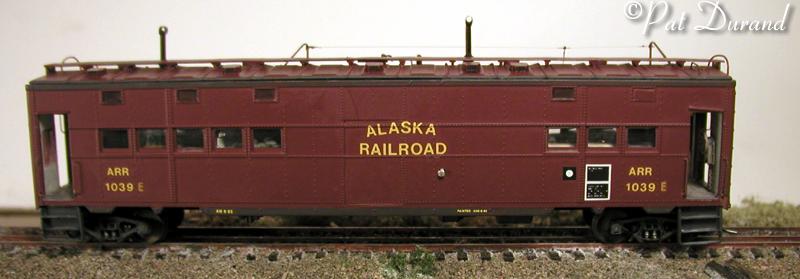

Exactly when troop kitchen cars were converted into cabooses 1039 and 1043 is unknown, but they both appear on the Alaska Railroad Equipment Register No. 12-G from 1963. Both are still in use today by the Engineering Department and have the suffix E added to the number. Usually you will find them with ditcher crews or Locomotive Cranes as outfit cars on long term projects. When assigned to a specific crew a graffiti style tag is added near the door on the side or end of the car such as B&B#6.
These strange looking cabooses changed over the years, along with their assignments. They were home away from home for the snow fleet for many years. Today 1039E is the most complete, still retaining roof walk and ladders. Two oil stoves and two oil bunkers filled through the roof and serviced by a ladder on one side are spotting features. The center side doors were sheeted over and vestibules were built into each end after the collision posts and diaphragms were removed. On one end a back up light was centered over the door and a window cut in to the right of the door provided the conductor a rear view while seated.
The model started life as a Walthers ACF Troop Kitchen Car undecorated kit.(932-4180). It takes an extra side to obtain material to fill the two side doors. The plastic used by Walthers, carves like cool butter, so making the openings in the car ends and sides is an easy task. Then you need to dry fit these pieces to the core and remove material from the core. End walls in the vestibule were made from styrene car siding and doors from the scrap box just like the railroad did it. Expect that many of the tabs that allow the kit to just snap together will be broken off during handling, so make sure and align things properly when gluing it back together.
In order to clear the trucks the corner steps were built vertical on the prototype. I used sheet brass and flat stock and soldered them as indicated in the photos. The roof walk was built from scribed styrene and all the bolt heads are indicated with a pin prick. After painting you cannot tell a small dimple from a small hole so that works fine. This was a fun project built on commission for Randy Thompson.
You'll find prototype photos and information here
and here.